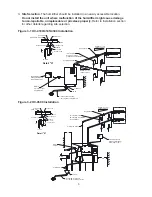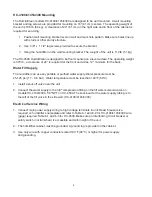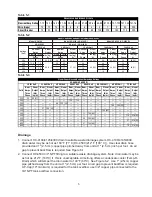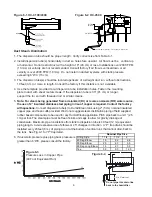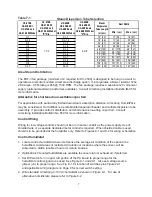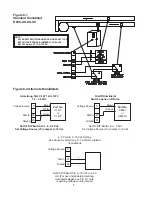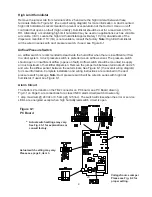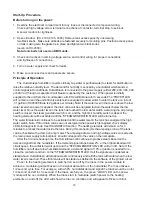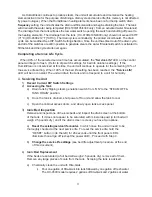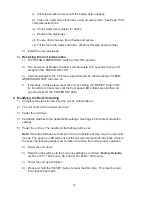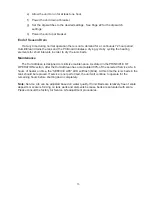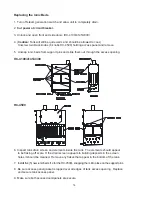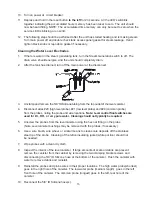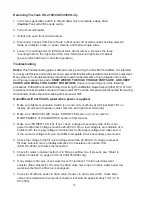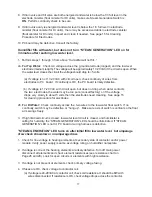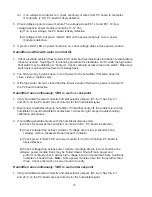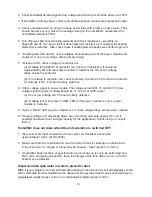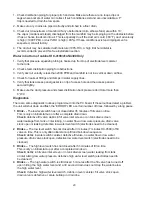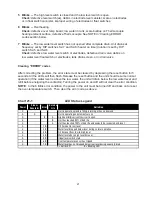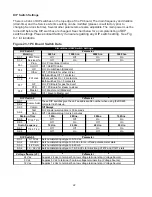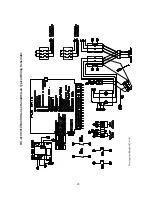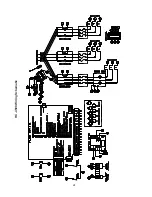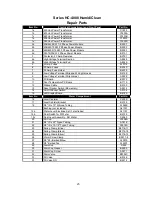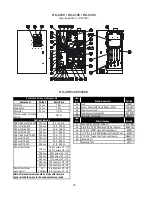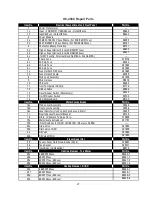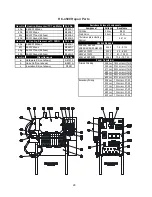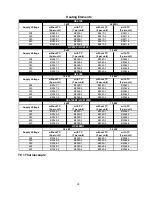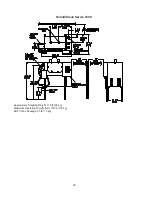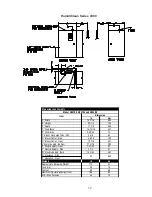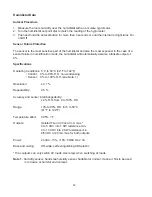
17
8. If drain valve and fill valve are both energized and water is below the 1/3 full level in the
electrode canister (float canister for DI units), make sure Steam Generation Switch is
ON. Perform continuity check to be sure.
9. If drain valve only is energized and water level is below the 1/3 full level in electrode
canister (float canister for DI units), there may be excessive debris in electrode canister
(float canister for DI units). Inspect and clean if needed. See page 15 for Cleaning
Procedure for Electrodes.
10.PC board may be defective. Consult the factory.
Humidifier fills with water, but does not turn “STEAM GENERATION” LED on for
3 minutes after reaching low water level.
1. Perform steps 1 through 3 from above “Humidifier will not fill...”
2a. For Tap Water: Check AC voltage across the ground electrode (longest) and the low level
electrode (medium length). The voltage will be approximately 17-20 VAC if the circuit is open. When
the water level closes the circuit the voltage should drop to <5 volts.
(a) If voltage is not 17-20 VAC with circuit open, check continuity of wires from
electrodes to PC board. If continuity is OK, the PC board is likely defective.
(b) If voltage is 17-20 VAC with circuit open, but does not drop when water contacts
the two electrodes, the water may be too pure (consult factory) or if the voltage
drops very slowly to about 5 volts then the electrodes need cleaning. See page 15
for cleaning procedure for electrodes.
2b. For DI Water: Check continuity across the two wires to the low water float switch. If no
continuity, switch may be defective or “hung up”. Make sure axis of switch is vertical so the float
arm swings freely.
3. If high limit/sail circuit is closed, low water level circuit is closed, and humidistat is
calling for humidity, the “STEAM GENERATION” LED should be illuminated. If “STEAM
GENERATION” LED is not lit, PC board or wiring harness is defective.
“STEAM GENERATION” LED turns on after initial fill to low water level, but amperage
draw check shows low or no amperage draw.
1. Check for line voltage to heating elements at secondary side of contactor and/or power
module. Verify power supply is same as voltage rating on humidifier nameplate.
2. If voltage is correct, the heating elements are likely defective. Turn off main power,
disconnect all elements and check element resistances (see resistance chart on
Page 26 and 28). Look for open circuits or elements with high resistance.
3. If voltage is not present at elements, check primary voltage fusing.
4. If fuses are OK, check voltage to contactor coil.
(a) If voltage is 24-28VAC at contactor coil, check coil resistance. It should be 8W with
wires disconnected. If resistance is OK, check voltage drops across the contactor.

